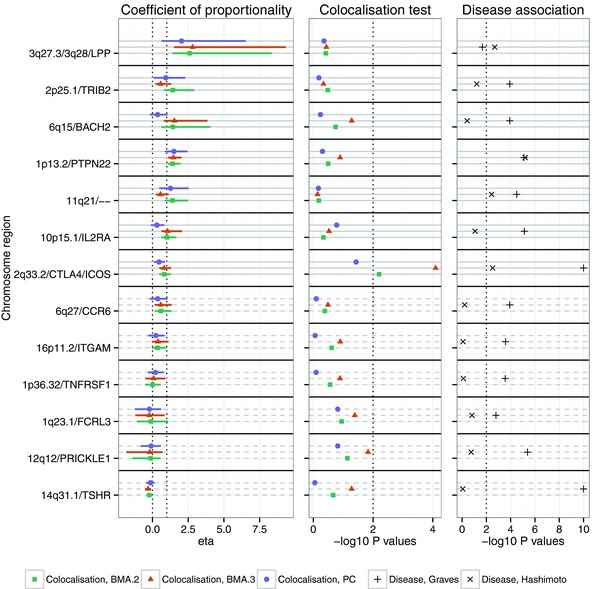Figure 2.

Power for proportional colocalisation analysis using PC or BMA approaches. The theoretical maximum power (Max) is calculated using the two causal variants (which are known in simulated data) and show that the predominant determinant of power is the r2 between the variants, with power decreasing as LD increases. When the causal variants are not known, power decreases under either a PC or BMA approach. The X axis shows the maximum r2 between the causal variants, i.e., r2 has been categorised into five groups: [0, 0.2], [0.2, 0.4], [0.4, 0.6], [0.6, 0.8], [0.8, 1.0]. N is the number of cases and controls in a case‐control dataset with relative risk of disease RR. Power is shown for comparing two case‐control studies with equal sample numbers and effect sizes (solid lines) or for comparing a case‐control study to an eQTL study of 1,000 samples where the causal variant explains 30% of the variance of the expression. The PC approach was implemented by selecting the smallest subset of components that captured 85% of the genetic variance. We considered only tagging genotype scenarios to reduce computation time.
